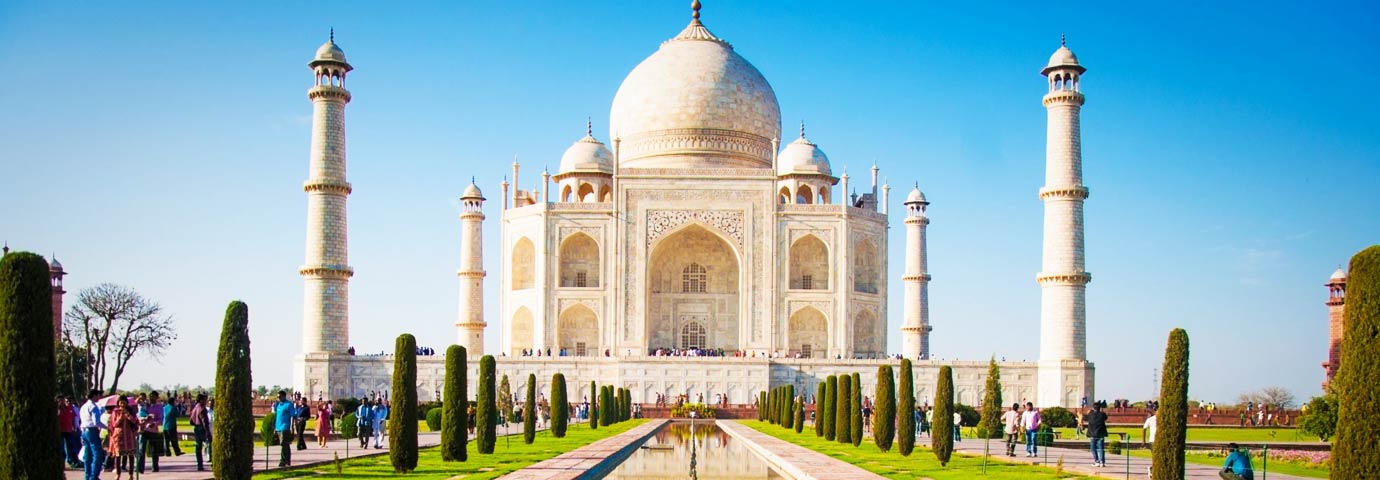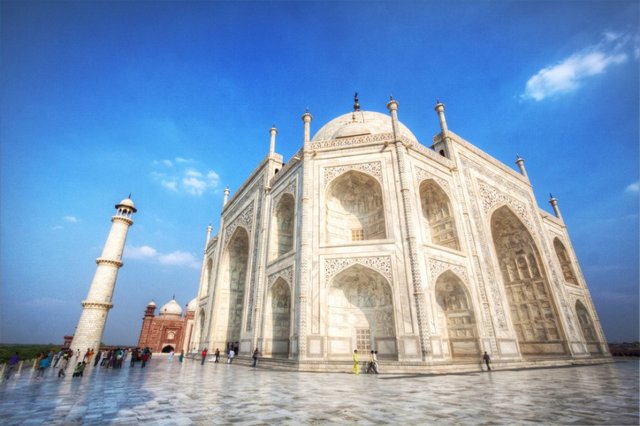TAJMAHAL,Agra,India
Taj Mahal A royal tombs located in Agra, India. Mughal emperor Shahjahan built this wonderful mausoleum for his memoir, his wife Arjumand Banu Begum, who is known as Mumtaz Mahal. Construction of the building started in 1632, which was completed in about 1653 AD. Although there were many debates on the question of who made the monument, it was clear that a group of artists and artisans who had built a mausoleum, who were with Ustad Ahmed Lahiri, were in the forefront of being the main designer of the Taj Mahal.
The Taj Mahal (sometimes called Taj only) is considered an attractive attraction of Mughal architecture, whose construction style combines Persia, Turkey, Indian and Islamic architecture. Although the white domed marble sultry royal mausoleum is well-liked, the Taj Mahal is actually a complex integral architecture as a whole. It was listed as UNESCO World Heritage Site in 1983. One of the seventh wonders of the world is the Taj Mahal. [3] It was then called "universally admired masterpiece of the world's heritage.
Effect
Taj Mahal has been built on various traditional designs, especially in Persia and Mughal architecture. Specific designs have been made exactly like the Timur and Mughal buildings. Among them, the Gur-e-Amir of Timur, the predecessor of the Mughal Empire in Samarkand, [6] the shrine of Humayun, the shrine of Imad-ud-Daulah (sometimes called the child Taj), and Shah Jahan's own Delhi Jami Mosque built in Delhi Under his patronage, the Mughal empire reaches a new level of revision. [7] While the former Mughal buildings were built in red belt, Shahjahan introduced the white-colored marble stones.
Garden
Taj Mahal
In front of the Taj Mahal, a large charbagh (Mughal garden was divided into four parts earlier) was made. The shares are divided into 16 flower gardens, using a high level of up to 300 meters X 300 meters gardens. There is a high marble stone water maze in the middle of the shrub and the middle part of the door and in the garden, there is a simple linear pond in the north and south, to reflect the Taj Mahal. There are also many other tree-like roads and fountains in the garden. [8]
Charbagh Garden was first made in India by the first Mughal Emperor Babur, which was designed like a garden in Persian. Charbagh means that the Garden of Paradise will be reflected. In the writings of the Mughal period, a Persian mortician described the garden of heaven as an ideal garden, which would be full in abundance. Water or water has played a major role in this description: In the text, there are four rivers formed from a mountain in the garden of heaven, and it has been separated in the north, south, east and west of the garden.
Walkway road on the side of linear pyramid
Almost all Mughal Charbagas are quadrangular, with a shrine in the middle of the garden. But the Taj Mahal is different from others because its shrine is located on one side of the garden rather than in the middle of the garden. The newly discovered Mahtab Bagh on the other side of the river Yamuna indicates other types of information, the river Yamuna was included in the garden design so that it would mean the river of the heavens.
The arrangement of the garden and its architectural features such as its fountain, brick or marble road, and the flower bed of the geometric brick line are similar to those of Salimar and the same engineer Ali Mardan has designed this sequence.
Later it is known that the garden of Gopan, Daphodil, various tree plants and other plants are very prevalent. With the rapid erosion of the Mughal Emperors, garden erosion also occurs. The British took responsibility for the maintenance of the Taj Mahal during the English rule, they changed the natural landscape and gave a new look to the formal garden in London.


it is amazing history in this place